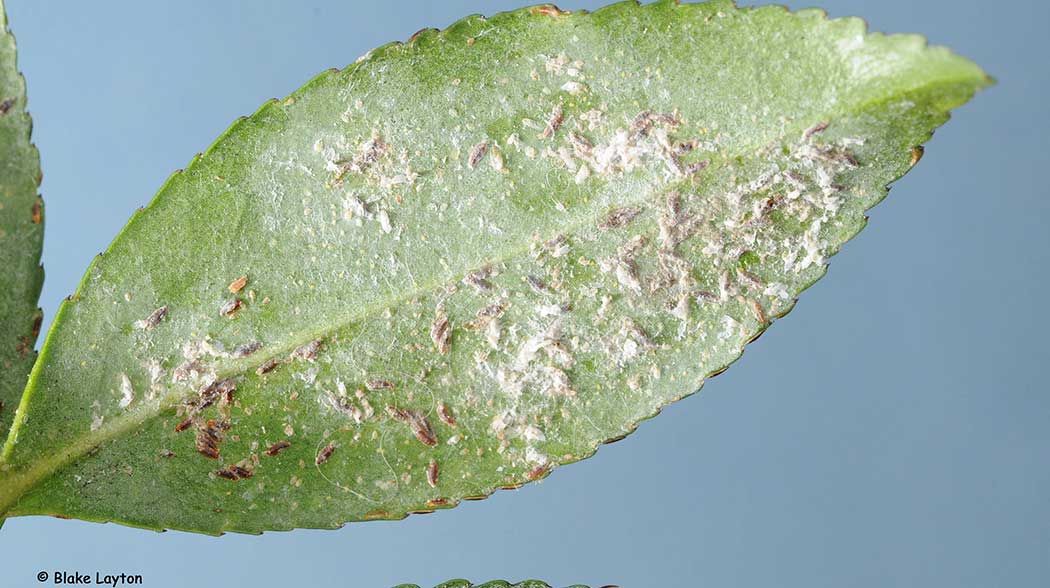Tea Scale Vol. 2, No. 26

Fiorinia theae
Order: Hemiptera
Family: Diaspidae
That camellia is not looking so good. Many of the leaves have irregular yellow blotches, and there is a white fuzzy growth on the bottoms of the leaves. The white fuzzy material is produced by male tea scales. Look closer and you will see the brown, oyster-shaped covers of the female scales (about 1/10 inch long). The adult stages are immobile, but they have their mouthparts embedded in the leaf and are sucking out the sap. Use a hand lens to look even closer and you may see smaller yellow crawlers or newly settled immature scales. Flip over one of the brown female scales and you may find a dozen or so yellow eggs underneath. Tea scale is the most common insect pest of camellias, both japonicas and sasanquas, and it also attacks hollies. It is rare to find a camellia that does not have some tea scale, and plants can thrive with light infestations, but heavy infestations can result in unsightly plants with poor growth and reduced bloom.
Control: Soil-applied systemic treatments with products that contain dinotefuran are especially useful against tea scale (Ortho Tree & Shrub Insect Control—sold as granules or liquid concentrate, are examples of “homeowner formulations." Safari 20 SG and Zylam Liquid Systemic Insecticide are commercial formulations that are not restricted use.). This treatment is somewhat slow-acting but provides long-term control. Rate depends on the size of the shrub being treated; mix liquid or SG formulations and drench according to label or sprinkle the specified amount of granule formulations on the soil immediately around the plant and water in. Sprays of contact insecticides, such as malathion or acephate (Bonide Systemic Insect Control), applied when crawlers are active, are also effective, but if you use crawler sprays, apply at least two sprays about 10 days apart. Sprays of horticultural oil, such as Saf-T-Side or Bonide All Seasons Horticultural & Dormant Spray Oil, are also useful, but they require thorough spray coverage of undersides of leaves to be effective. Follow label directions carefully.
See Extension Publication No. 2369, Insect Pests of Ornamental Plants in the Home Landscape, http://extension.msstate.edu/sites/default/files/publications/publications/p2369.pdf, page 7-9 and pages 35-36 for more information on scale insects and how to control them.
Blake Layton, Extension Entomology Specialist, Mississippi State University Extension Service. The information given here is for educational purposes only. Always read and follow current label directions. Specific commercial products are mentioned as examples only and reference to specific products or trade names is made with the understanding that no discrimination is intended to other products that may also be suitable and appropriately labeled.

